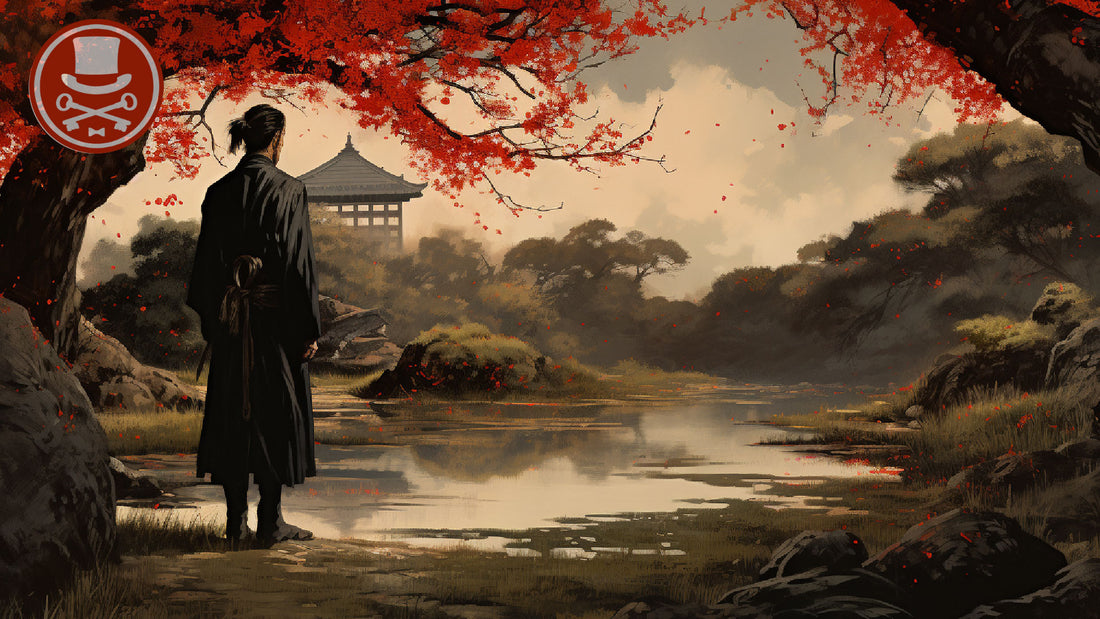The three questions you must answer before entering the battlefield of life.
by Alberto Mella
Master and disciple walked side by side through a beautiful garden. The disciple suddenly stops and asks: "Master, you talk about and preach to me the ways of peace. Yet I have learned from you deadly techniques of combat and the tactics of war. How do you reconcile the two?” The master gracefully squats, chooses a flower and plucks it. “My disciple: it is better to be a warrior tending to his garden than a gardener in a war.” Throughout the years, this story from Chinese martial arts lore has inspired and helped me reconcile my religious practice (I am a Christian) with my martial arts studies. It helped me again later when I had to reconcile my religious practice with my chosen profession; that of a United States soldier. This story made clear to me that it was never about wanting to fight, but about being ready to fight. That the purpose of the warrior, his reason for fighting, is always to achieve peace. Today I’m no longer a soldier. I do, however, still practice martial arts. No longer a “spring chicken” I focus more on the philosophical and spiritual aspects rather than the physical ones. I was told by many martial arts masters that the study of martial arts was a lifelong endeavor because” once a warrior, always a warrior”. Recently, the hubris of that statement made my head spin. Aren’t we all fighting battles at any given time? Battles others know nothing about? Wouldn’t that make us all warriors? A “battle” need not be relegated to the physical plane, and the “enemy” might not be as obvious. How many people do you know, yourself included, who battle addiction or a psychological condition? How about more benign battles, like those in the office or at home? And then there’s the obvious question: do you know how to fight?

Throughout history, fighting and the warrior mentality has been relegated mostly to males. Being a man and fighting is always seen with violent connotations. This myth needs to be dispelled because fighting is gender neutral. Next, we need to deal with the fact that most of the fights that one undertakes throughout a lifetime (unless fighting something is your chosen profession like law enforcement, military, prizefighter, etc.), are not physical and are not going to be violent. I say this with the understanding that it only takes one violent encounter to put your life in peril and that you should prepare for those as well. But I will let others tell you how to do battle with your body and how to train in the handling of weapons. What I would like to do, if you’ll allow me, is to show you how to prepare and fight your daily battles; to become a warrior in the garden.
It starts with these three questions:
- What is a battle?
- Why are you fighting?
- What does victory look like?
The answers to these questions may appear obvious at first glance, but I really need you to put some thought into it.
1) What is a battle?
For our purpose, a battle is any conflict in which you find yourself antagonized by an object, person or circumstance. These things we will call “the enemy”. From your inner demons to that cigarette stick, from that sales person to your boss, battles come in all shapes and sizes and once you recognize them your next determination should be if they are worth the fight.2) Why are you fighting?
For your own sanity? For a salary increase? This question is going to determine your level of commitment because once you are in a fight you are in it to win it. Which brings me to the last question:3) What does victory look like?
Do you want to stop drinking for one day? Do you want your friend to recognize that your political views have merit? Do you need your victory to be absolute or will you accept incremental steps? The warrior in the garden fights to achieve peace. At the end of each battle, that goal is in mind. Any result that leaves you open to another conflict is no victory at all. A one-size-fits-all approach to fighting your daily battles, can this be achieved? I would argue that yes, it is possible. As expressed before, battles come in all shapes and sizes but the way you fight depends on the same three elements: Skills and Knowledge (as one), Choices, and Opportunities.
Let us use two fighters inside a ring as an example. A boxer is skilled in the use of his fists. A fighter who can also use his legs to strike has more choices in the battle. But for both fighters, understanding their skills and the choices available to them will allow them to see and create opportunities for striking. If you are skilled at persuasion you have better than average choices to move an argument in your direction or even find the opportunity to convince your opponent that your point of view has merit. This holds true for the great majority of your daily battles. What is important now is to recognize which skills are useful to you in a fight and which skills you need to acquire.
I will expand on these three elements in greater detail in upcoming posts. For now, I want to leave you with this: Everyone is a warrior fighting a battle you know nothing about. The world is a battlefield, your life a constant war, and the ultimate goal of the warrior is peace. Let us become warriors in the garden, let us get ready for the fight.
Alberto Mella is an award-winning speaker characterized for his inspiring message, dynamic and humorous presentation style. Alberto is an Army veteran and has been a martial arts practitioner for the past three decades. albertoemella@gmail.com
Photo Credits: "The Warrior in The Garden" Composite Image by Juan Sepúlveda. Terra Cotta Warrior, Xian by Joe Hunt Licensed under CC by 2.0 Chinese Garden by Rachit Bajpai Licensed under CC by 2.0




